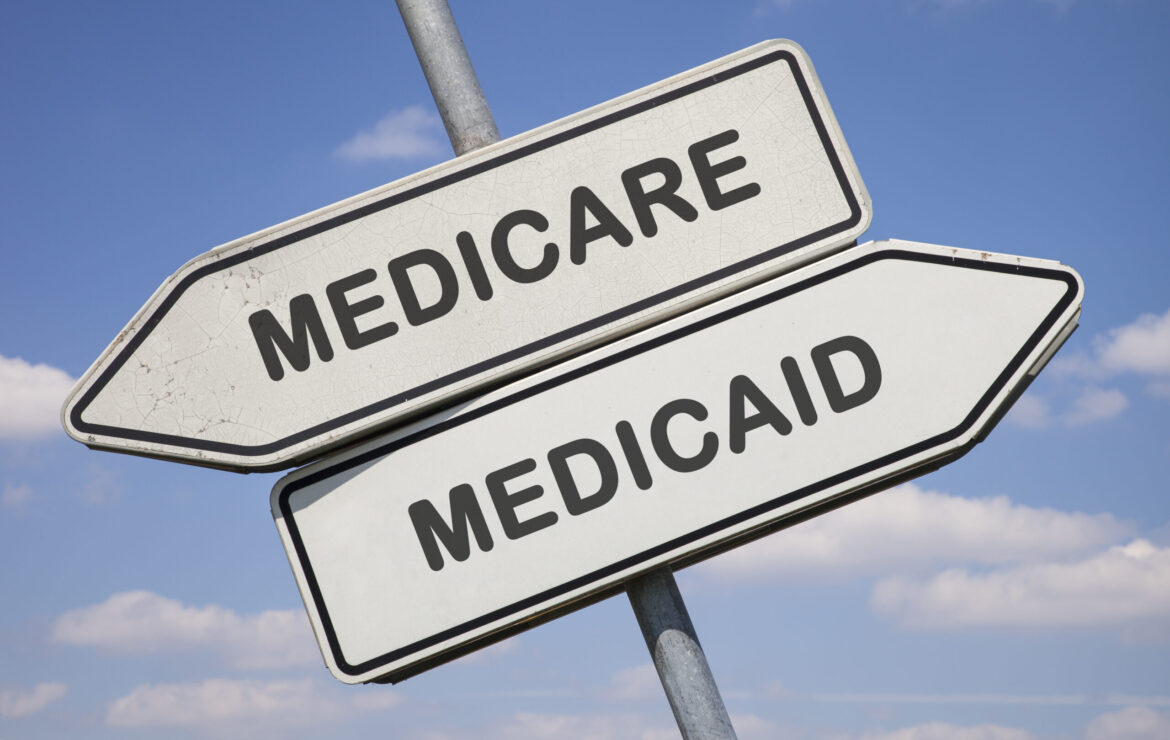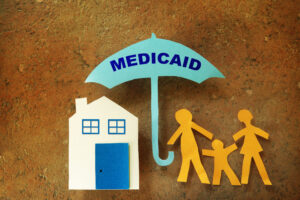What’s the difference between Medicaid and Medicare?

If you are 65 or older and are in need of health insurance, there are two major government funded programs available in the United States, Medicaid and Medicare. Here we will take the opportunity to describe each program, how they differ and situations in which someone may qualify for both.
What is Medicaid?
Medicaid is a joint federal and state government program in the United States that provides healthcare coverage to low-income individuals and families. It was established in 1965 alongside Medicare as part of the Social Security Amendments, and it is administered by both the federal government and individual state governments. Medicaid is the largest source of health insurance coverage for low-income Americans.
Each state has its own Medicaid program, allowing flexibility in designing and managing the program. Since Medicaid is an entitlement program, individuals and families must meet the eligibility requirements before enrolling.
Key Points About Medicaid
Eligibility – Eligibility for Medicaid is primarily based on income and family size. Each state sets its own income limits and may have different criteria for eligibility, so the specific rules can vary from one state to another. In some cases, eligibility may also be based on factors like disability, age, and pregnancy.
Coverage – Medicaid provides comprehensive healthcare coverage, including doctor visits, hospital care, prescription drugs, preventive services, and more. States have some flexibility in determining the specific services covered under their Medicaid programs.
Funding – Medicaid is funded jointly by the federal government and individual state governments. The federal government sets minimum standards and provides matching funds to states, with the federal share covering a significant portion of the program’s costs.
The exact federal matching rate (FMAP) varies from state to state, based on the state’s relative wealth.
Expansion – The Affordable Care Act (ACA), also known as Obamacare, allowed states to expand Medicaid eligibility to include more low-income adults. Medicaid expansion has been adopted by many states, extending coverage to more people who were previously ineligible.
Managed Care – Many states use managed care organizations (MCOs) to administer Medicaid benefits. These organizations contract with the state to provide healthcare services to Medicaid beneficiaries.
Children’s Health Insurance Program (CHIP) – CHIP is a separate program that provides health coverage for low-income children in families that do not qualify for Medicaid. It is often administered alongside Medicaid in many states.
What is Medicare?
Medicare is a federal health insurance program in the United States primarily designed to provide healthcare coverage for individuals aged 65 and older, though it also covers certain younger people with disabilities and individuals with End-Stage Renal Disease (ESRD). Medicare was established in 1965 under Title XVIII of the Social Security Act and it is administered by the Centers for Medicare & Medicaid Services (CMS).
Key Points About Medicare
Parts of Medicare – Medicare is divided into different parts, each covering specific services:
- Part A (Hospital Insurance): Covers inpatient hospital care, skilled nursing facility care, hospice care, and some home health care. Most people do not pay a premium for Part A if they or their spouse have paid Medicare taxes for a certain amount of time.
- Part B (Medical Insurance): Covers outpatient care, doctor services, preventive services, and some home health care. Part B requires a monthly premium, which varies based on income.
- Part C (Medicare Advantage): These are private health plans that contract with Medicare to provide Part A and Part B benefits, and often Part D. These plans may offer additional benefits, such as vision, dental, and hearing coverage. Medicare Advantage plans typically have network restrictions and may require higher out-of-pocket costs.
- Part D (Prescription Drug Coverage): Helps cover the cost of prescription drugs. Part D plans are offered by private insurers approved by Medicare. These plans require a monthly premium and may have different formularies (lists of covered drugs).
Eligibility –
- Age 65 and Older: Most people become eligible for Medicare when they turn 65.
- Disability: People under 65 who have been receiving Social Security Disability Insurance (SSDI) for 24 months are eligible for Medicare.
- End-Stage Renal Disease (ESRD): Individuals of any age with ESRD requiring dialysis or a kidney transplant can qualify for Medicare.
Enrollment – There is an initial enrollment period lasts for seven months. The period begins three months before the month you turn 65 and ends three months after your birth month. If you missed the initial enrollment period, there is a General Enrollment period that runs from January 1 to March 31 each year. Special Enrollment Periods are available in certain circumstances, such as losing other health coverage or moving out of a Medicare Advantage plan’s service area.
Costs – Most people do not pay a premium for Part A, but Part B and Part D usually require monthly premiums. Part C premiums vary by plan. Here is a breakdown of Medicare costs in 2024
Deductibles and Copayments – Medicare Parts A and B have deductibles and coinsurance that beneficiaries must pay. Part D plans also have varying deductibles, copayments, and coinsurance.
Supplemental Coverage – Medicare Supplement Insurance, I.E. Medigap, are private insurance policies that help cover some of the out-of-pocket costs not covered by Original Medicare (Parts A and B), such as copayments, coinsurance, and deductibles.
Summary of Medicare vs. Medicaid
Medicare and Medicaid are two separate health insurance programs run by the government. While many people who qualify for one may be eligible for the other, there are differences in the services covered, eligibility requirements, and the amount a recipient will pay in copays and deductibles.
While Medicare is a federal program primarily for older adults and certain younger individuals with disabilities, Medicaid is a joint federal and state program providing healthcare coverage for low-income individuals and families. Some people are eligible for both Medicare and Medicaid, known as “dual eligibility,” which can help cover additional costs and services.


